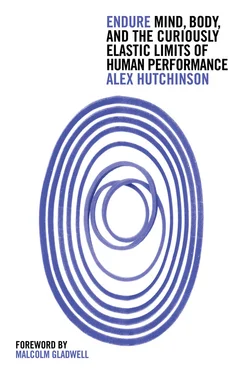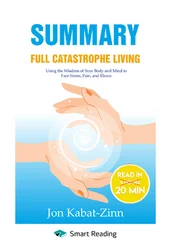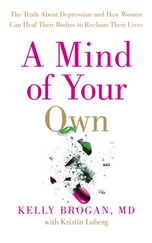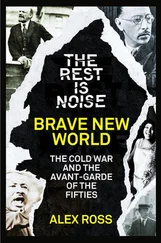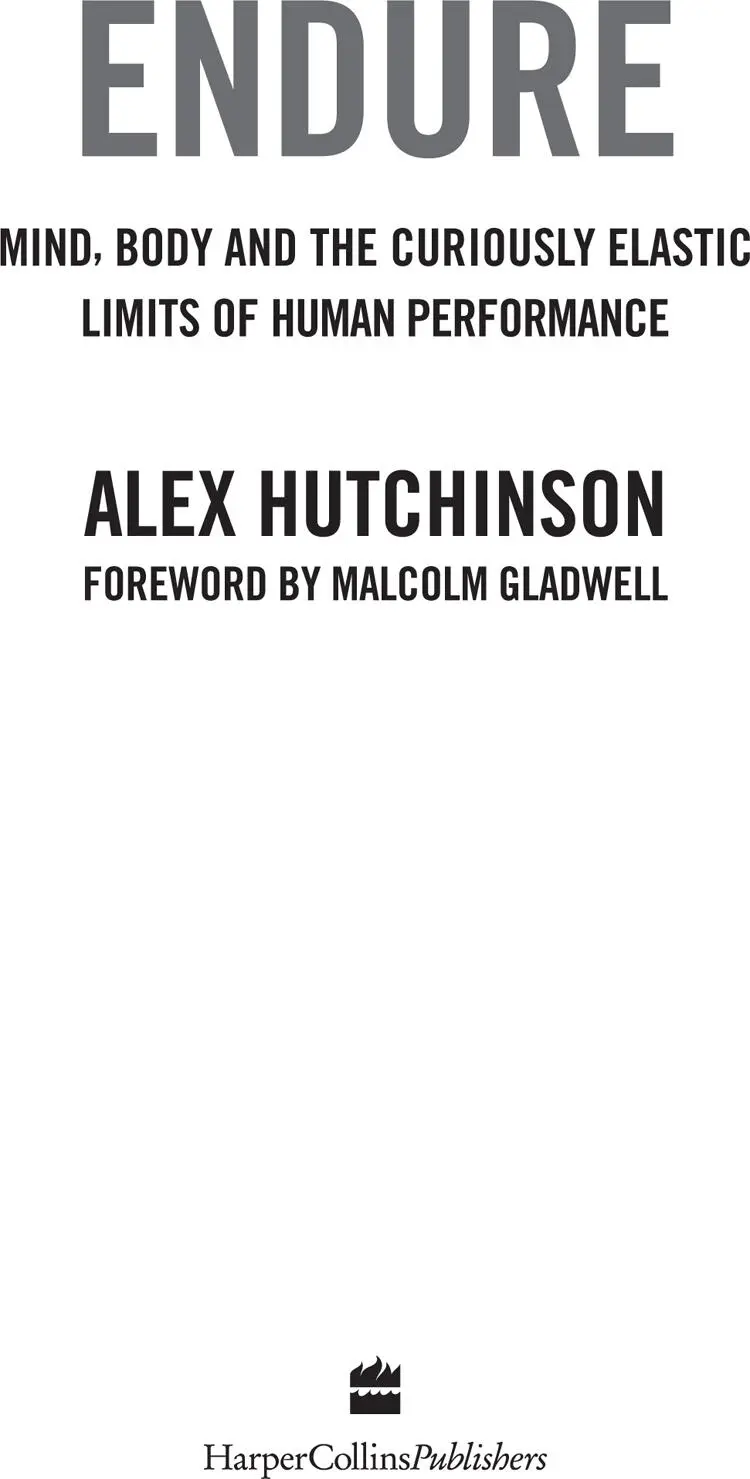
HarperCollins Publishers
1 London Bridge Street
London SE1 9GF
www.harpercollins.co.uk
This edition published by Harpercollins Publishers 2018
FIRST EDITION
Text © Alex Hutchinson 2018
Cover layout design ©HarperCollins Publishers Ltd 2018
A catalogue record of this book is available from the British Library
Alex Hutchinson asserts the moral right to be identified as the author of this work
All rights reserved under International and Pan-American Copyright Conventions. By payment of the required fees, you have been granted the nonexclusive, non-transferable right to access and read the text of this e-book on screen. No part of this text may be reproduced, transmitted, downloaded, decompiled, reverse engineered, or stored in or introduced into any information storage retrieval system, in any form or by any means, whether electronic or mechanical, now known or hereinafter invented, without the express written permission of HarperCollins e-books.
Find out about HarperCollins and the environment at www.harpercollins.co.uk/green
Source ISBN 978-0-00-828509-8
Ebook Edition © February 2018 ISBN: 9780008277079
Version 2018-02-08
For my parents, Moira and Roger, whose curiosity, rigor,
respect for differing perspectives, and talent for clarity remain
the model I strive for in everything I write.
Cover
Title Page
Copyright
Dedication
Foreword by Malcolm Gladwell
Two Hours: MAY 6, 2017
PART I: MIND AND MUSCLE
CHAPTER 1 The Unforgiving Minute
CHAPTER 2 The Human Machine
CHAPTER 3 The Central Governor
CHAPTER 4 The Conscious Quitter
Two Hours: NOVEMBER 30, 2016
PART II: LIMITS
CHAPTER 5 Pain
CHAPTER 6 Muscle
CHAPTER 7 Oxygen
CHAPTER 8 Heat
CHAPTER 9 Thirst
CHAPTER 10 Fuel
Two Hours: MARCH 6, 2017
PART III: LIMIT BREAKERS
CHAPTER 11 Training the Brain
CHAPTER 12 Zapping the Brain
CHAPTER 13 Belief
Two Hours: MAY 6, 2017
Acknowledgments
Notes
Index of searchable terms
About the Publisher
Foreword
By Malcolm Gladwell
All distance runners have races that, in retrospect, make no sense. I have two. The first came when I was thirteen, in my first year of high school. With no more than a month of training under my belt, I ran a cross-country race in Cambridge, Ontario, against boys two years older than me. One of them was among the best distance runners for his age in the province. I can summon the memories of that race even today, forty years later. I simply attached myself to the leaders at the beginning and never let go, and ran myself to complete exhaustion, finishing a close and utterly inexplicable second. I say inexplicable because although I would go on to have a creditable career as a middle-distance runner on the track in high school, that race remains the only truly superb distance race I’ve ever run. I’ve underperformed at anything over 1,500 meters for the rest of my running life.
That is: with one exception. Two years ago, at the age of fifty-one, I ran a magical 5K in a small-town race in New Jersey, finishing a full minute faster than any 5K I’d entered since returning to serious running as a Master. On that summer day in New Jersey, I was suddenly my thirteen-year-old self from forty years ago in Cambridge. I dreamt big. I marveled at my running prowess. And then? Back to mediocrity again.
Like the obsessive person—and particularly obsessive runner —that I am, I have puzzled endlessly over two those anomalous races. I have running logs from my teenage years, and I’ve gone back over them, looking for clues. Was there some indication in my earliest training of that kind of performance? Did I do something special? For my latter 5K, of course, I have infinitely more. Months of data from Garmin on every workout leading up to the event, and then still more from the day of the race itself: pace, cadence, splits. On more than one occasion, leading up to a race, I’ve attempted to replicate the exact preparation I had for my New Jersey PR. I want lightning to strike twice. It hasn’t, and I’m beginning to suspect the reason it hasn’t is that I don’t properly understand what it means to perform a feat of endurance. I think you can see where I’m going with this: I am the perfect audience for Alex Hutchinson’s Endure.
A few words about Alex Hutchinson. We are both Canadians and both runners, although he is both a better Canadian (he still lives there; I don’t) and a much better runner than I ever was. He invited me once to a tempo run he does with his friends on Saturday mornings in a cemetery in North Toronto. As I recall, I finished last—or maybe second last, since one of his running crew very sweetly condescended to run at my pace. Alex disappeared from sight after the first bend. As you will discover, as you continue in these pages, Alex writes about the mysteries of endurance as a student of the science, a sports fan, and a keen observer of human performance—but also as a participant. He has his own anomalous races to explain.
It must be stressed, though, that this is not a running book. There are plenty of running books out there, and as a runner I have read many of them. But they are insider’s accounts written for other insiders: whether or not a runner should fore-foot or heel-strike, or aim for a cadence of 180 strides per minute, is a question only of significance to runners whose self-involvement extends all the way to the soles of their feet. But one of the (many) pleasures of Endure is how convincingly Hutchinson broadens the stakes. In one of my favorite passages, from the chapter on pain, Hutchinson writes of the attempt by Jens Voigt to break cycling’s “one-hour” record. Voigt was famously indifferent to pain. But when he climbed off his bike, after breaking the record, Hutchinson tells us he was in agony: “the pain he’d been pushing to the margins of his consciousness came crashing down.” That is a cycling story. But in Hutchinson’s hands it also becomes a way of asking a much deeper and more consequential question about how our physiology interacts with our psychology. In a wide variety of human activity, achievement is not possible without discomfort. So what is our relationship to that pain? How do the signals of protest from our brain interact with the physical will to keep moving? You don’t have to be a maniacal cyclist to appreciate that discussion. If anything, that discussion is likely to dissuade you from ever becoming a maniacal cyclist. “Everything was aching,” Voigt said. “My neck ached from holding my head low in that aerodynamic position. My elbows hurt from holding my upper body in that position. My lungs hurt after burning and screaming for oxygen for so long. My heart hurt from the constant pounding. My back was on fire, and then there was my butt! I was really and truly in a world of pain.” Oh man. It was painful just to read that passage.
Does Endure solve the puzzle of the anomalous race? In one sense, yes. My problem, I now realize, is that I tried to make sense of those performances using an absurdly simple model of endurance. The time I ran was my output. And so I worked backward and tried to identify the corresponding inputs that must have made it possible. Did I take one day of rest beforehand, or two? How quick was that hill workout the week before? Is there something to be learned from the last set of intervals I did? The data that we gather from our GPS sports watches makes this kind of thinking even more seductive: it encourages us to paint a simple picture of how and why our body moves through the world. After you’ve read Endure, I promise you, you’ll never settle for the simple picture again. There are many things Garmin cannot tell you. And luckily, for those many things, we have Alex Hutchinson.
Читать дальше
